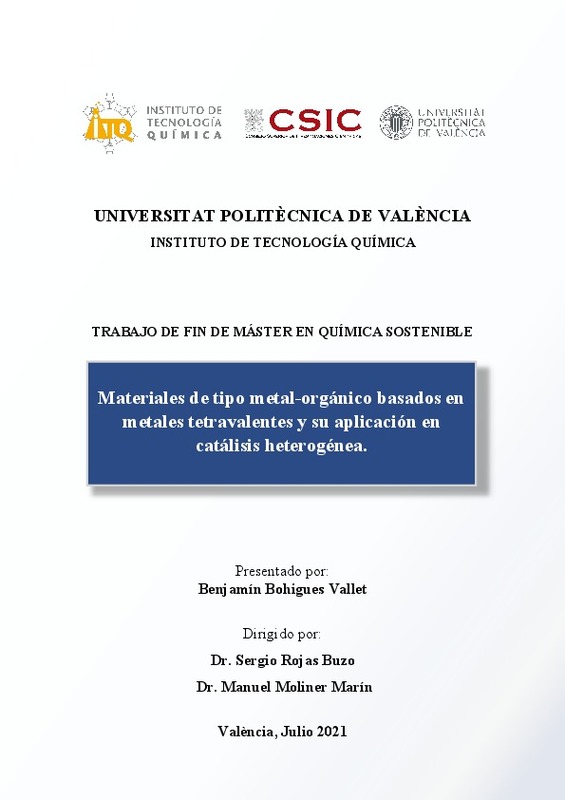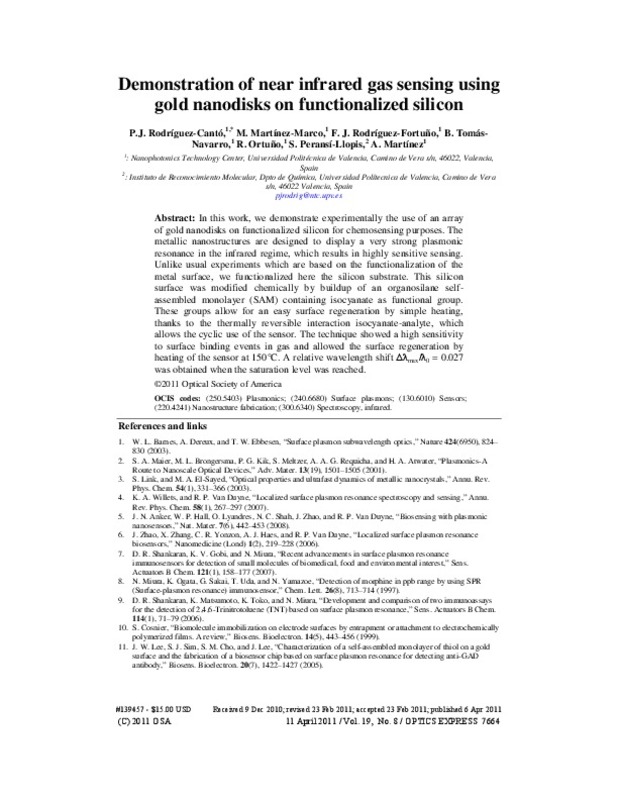|
Resumen:
|
[ES] La química verde o química sostenible es una corriente y una herramienta conceptual que se sustenta sobre 12 principios básicos y se basa en el diseño y desarrollo de procesos químicos que garanticen la protección y ...[+]
[ES] La química verde o química sostenible es una corriente y una herramienta conceptual que se sustenta sobre 12 principios básicos y se basa en el diseño y desarrollo de procesos químicos que garanticen la protección y el cuidado del medio ambiente.
Uno de los pilares fundamentales de la química verde es la catálisis, que se basa en el diseño, síntesis y aplicación de materiales que reducen la energía de activación de los procesos y, por ende, disminuyen el tiempo de reacción y el gasto energético asociado. Además, el uso de catalizadores que sean específicos y selectivos hacia los compuestos de interés disminuye notablemente la generación de compuestos no deseados o residuales.
Dentro de la catálisis existen tres grandes grupos que son, la catálisis heterogénea, la catálisis homogénea y la catálisis enzimática.
Los catalizadores heterogéneos son aquellos que se encuentran en una fase distinta del medio de reacción, por lo que presentan la ventaja de poder ser recuperados y reutilizados en sucesivos ciclos catalíticos. Debido a esto, la catálisis heterogénea ha sido un campo de investigación ampliamente estudiado en las últimas décadas.
Uno de los grandes grupos de catalizadores heterogéneos que se han desarrollado en los últimos años y que destacan por sus propiedades físicas y químicas son los sólidos porosos de tipo metal-orgánicos (MOFs). Estas redes metal-orgánicas formadas por la unión coordinativa de iones o nodos metálicos y ligandos orgánicos se han convertido en un área de investigación muy popular en el campo de la catálisis debido a su versatilidad. Las grandes áreas superficiales, los elevados tamaños de poro, la creación de entornos químicos, la uniformidad de los sitios activos y la posibilidad de introducir centros activos en el nodo metálico, el ligando orgánico o en los mismos poros de la red hacen que los MOFs presenten una elevada variedad sintética, convirtiéndose así, en grandes candidatos para ser aplicados en diversos procesos catalíticos selectivos. Sin embargo, uno de los grandes inconvenientes de estos materiales es su baja estabilidad térmica, mecánica y química. El uso de cationes metálicos tetravalentes en la síntesis de este tipo de materiales se ha demostrado que conduce a la formación de enlaces de coordinación más fuertes y a una alta conectividad del catión metálico que dota de una mayor estabilidad al material híbrido resultante frente a disolventes orgánicos, agua e incluso a disoluciones ácidas acuosas (estabilidad química), frente a altas temperaturas (estabilidad térmica) y frente a elevadas presiones (estabilidad mecánica).
La demanda de reacciones que reúnan varios de los principios básicos de la química verde como la utilización de catalizadores, la mejora de la eficiencia energética y de la economía atómica, así como la eliminación de subproductos, es cada vez mayor. Un tipo de procesos que combina gran parte de estos requisitos son las reacciones catalíticas en cascada. En dichos procesos, las etapas intermedias se llevan a cabo de manera sucesiva en un mismo sistema sin la necesidad de separar y purificar ningún intermedio de reacción. Aunque las reacciones en cascada sean
estrategias sintéticas de un elevado potencial, es necesario tener un control detallado en el diseño de catalizadores que reúnan las características idóneas para este tipo de procesos. Así, podrían ser catalizadas de forma secuencial por un mismo sitio activo del catalizador o también ser promovidas por dos o más centros activos distintos, es decir, por catalizadores multifuncionales.
[-]
[EN] Green chemistry or sustainable chemistry is a current and a conceptual tool that is based on 12 basic principles and is based on the design and development of chemical processes that guarantee the protection and care ...[+]
[EN] Green chemistry or sustainable chemistry is a current and a conceptual tool that is based on 12 basic principles and is based on the design and development of chemical processes that guarantee the protection and care of the environment. One of the fundamental pillars of green chemistry is catalysis, which is based on the design, synthesis and application of materials that reduce the activation energy of the processes and, therefore, reduce the reaction time and the associated energy expenditure. Furthermore, the use of catalysts that are specific and selective towards the compounds of interest notably reduces the generation of unwanted or residual compounds. Within the catalysis there are three large groups that are, heterogeneous catalysis, homogeneous catalysis and enzymatic catalysis. Heterogeneous catalysts are those that are in a different phase of the reaction medium, so they have the advantage of being able to be recovered and reused in successive catalytic cycles. Because of this, heterogeneous catalysis has been a widely studied field of research in recent decades. One of the large groups of heterogeneous catalysts that have been developed in recent years and that stand out for their physical and chemical properties are metal-organic porous solids (MOFs). These metal-organic networks formed by the coordinative union of metal ions or nodes and organic ligands have become a very popular research area in the field of catalysis due to their versatility. The large surface areas, the high pore sizes, the creation of chemical environments, the uniformity of the active sites and the possibility of introducing active centers in the metal node, the organic ligand or in the pores of the network make MOFs They present a high synthetic variety, thus becoming great candidates to be applied in various selective catalytic processes. However, one of the great drawbacks of these materials is their low thermal, mechanical and chemical stability. The use of tetravalent metal cations in the synthesis of this type of materials has been shown to lead to the formation of stronger coordination bonds and a high connectivity of the metal cation that provides greater stability to the resulting hybrid material against organic solvents. water and even aqueous acid solutions (chemical stability), against high temperatures (thermal stability) and against high pressures (mechanical stability). The demand for reactions that meet several of the basic principles of green chemistry such as the use of catalysts, the improvement of energy efficiency and the atomic economy, as well as the elimination of by-products, is increasing. One type of process that combines a large part of these requirements is catalytic cascade reactions. In these processes, the intermediate stages are carried out successively in the same system without the need to separate and purify any reaction intermediates. Although cascade reactions are synthetic strategies with a high potential, it is necessary to have a detailed control in the design of catalysts that meet the ideal characteristics for this type of process. Thus, they could be sequentially catalyzed by the same active site of the catalyst or also promoted by two or more different active centers, that is, by multifunctional catalysts.
[-]
|










